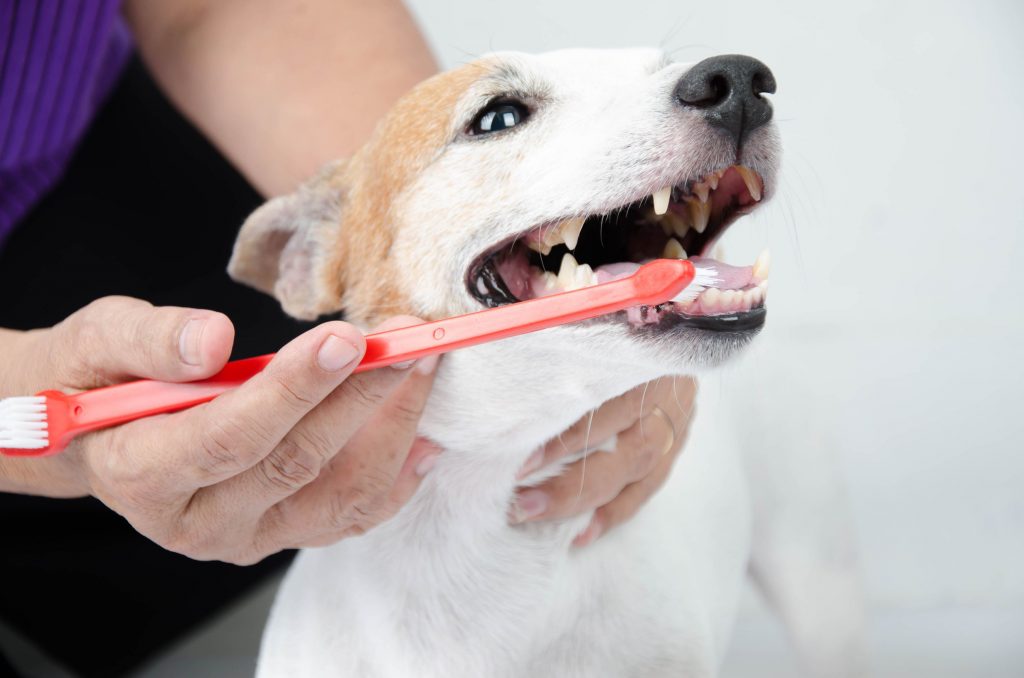Yuck, Dog Breath! Signs of Dental Disease in Dogs

Dental care in pets is a very important, yet often overlooked, aspect of animal health and husbandry. All Creatures Veterinary Hospital of Brooklyn knows that pet owners want to do the best for their furry friends, though. We are happy to share why and when you might want to think about dental disease in dogs.
Signs of Trouble
Dental disease in dogs is fairly common, with up to 80% of them having some form of tooth trouble before the age of three. Dental disease can come in the form of malocclusions (an abnormal bite), too many teeth, trauma, or periodontal disease.
Periodontal disease occurs as plaque builds up on the tooth. Plaque is a mixture of food material, saliva, and bacteria that can irritate the gum tissue and cause infection and disease of the soft tissues and bone that surrounds the tooth over time. Plaque also can harden into tartar through mineralization, which can make a nice place for further plaque to accumulate.
Signs that your pet may be suffering from dental disease include:
- Bad breath (halitosis)
- Red or irritated appearing gums
- One or more discolored teeth
- Visible plaque or tartar
- A broken or otherwise deformed tooth
- Bleeding when chewing on hard objects
- Increased drooling
- Missing or noticeably loose teeth
- Reluctance to chew or eat
- Swelling or pain along the upper muzzle or lower jaw
While some people assume if their pet is eating, then all is well, this couldn’t be further from the truth. Most animals will continue to eat even in the face of very severe dental disease. Their survival instincts simply don’t allow them to even consider skipping a meal.
Why Worry About Dental Disease in Dogs
Who really cares, though, if your best four-legged friend has some stinky breath? The consequences of dental disease in dogs go well beyond an unpleasant odor, unfortunately.
When periodontal disease sets in, damage to the structures around the tooth can lead to the loosening and eventual loss of the tooth. While losing teeth is not a good thing in and of itself, perhaps the most detrimental element of dental disease is pain.
In more advanced disease, infection of the bone around the tooth may occur. Your pet might also experience abscess-like swelling. In extreme cases, damage and infection to the bone can even lead to the fracturing of the jaw. Periodontal disease is painful, and no beloved family member deserves to suffer.
As periodontal disease invades the soft tissues, bacteria do as well. During the progression of dental disease in dogs, bacteria can enter the bloodstream, called bacteremia. Bacteria then can spread to other places in the body and may affect other major organs such as the kidneys, liver, and heart.
Pet dental care is an important part of your dog’s wellness care plan, and our veterinary staff is here to guide you. We can help you develop a good home dental routine and also provide routine dental examinations and cleanings as needed.
If you have any concerns about your pet’s dental health or think it is time for a good dental examination, please contact us so that we can help. Doggy breath may not be pleasant, but dental disease in dogs is serious business for so many other reasons, and we are here as your personal professional resource.

